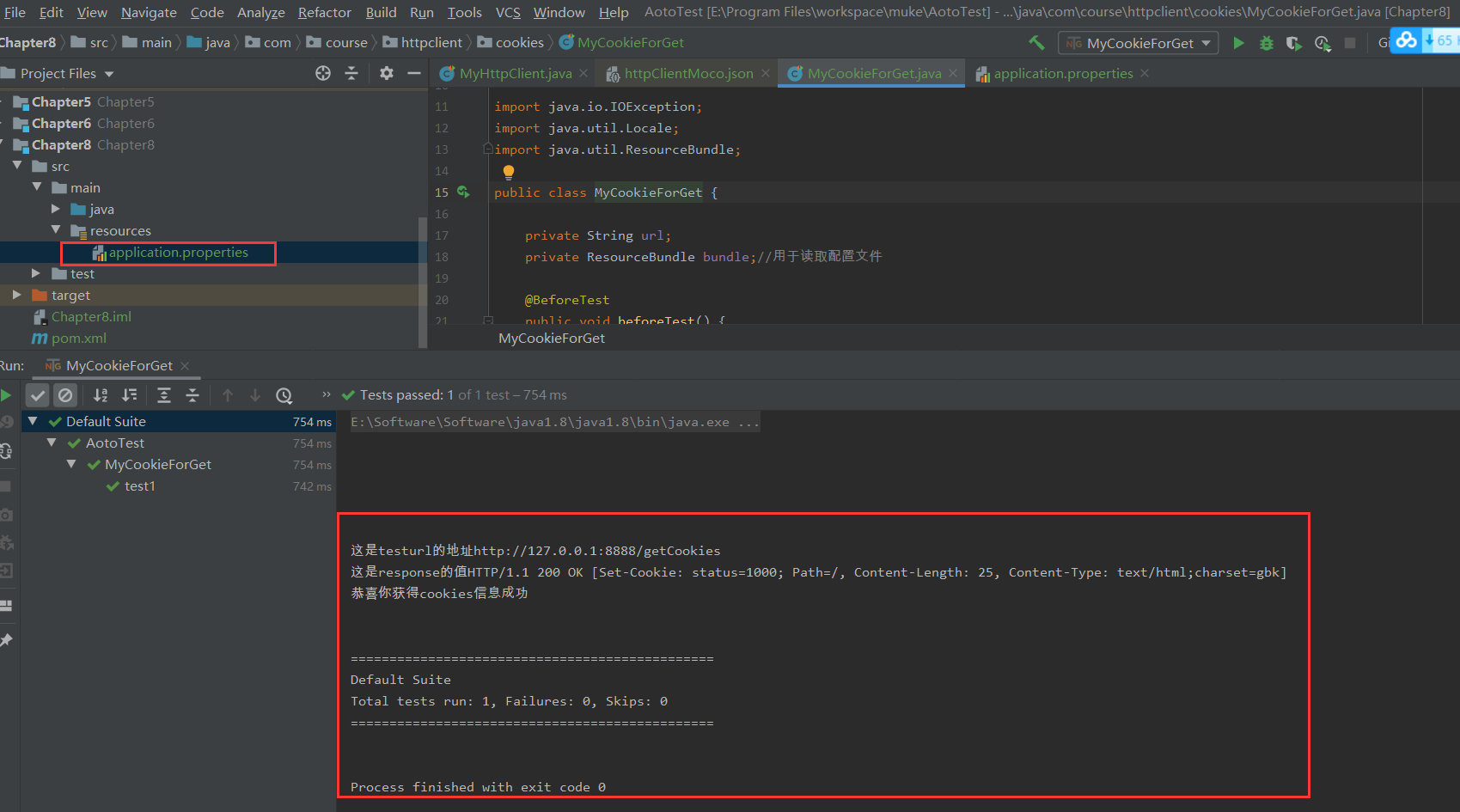本文主要包含HttpClient接口测试,ResourceBundle读取配置文件中的接口地址信息。
ResourceBundle可读取.properties文件,.properties的格式是key value。.properties可以配置接口请求中的域名(ip)和路径等信息。.properties应该存放src->main->resources中。
如果.properties文件和java类在同一路径下,那么可以直接用ResourceBundle.getBundle("application", Locale.CHINA)读取文件信息,其中application是文件名。
下面代码包含了java接口测试运行代码 、application.properties配置文件 、moco模拟的get请求json文件。
java代码如下
1 package com.course.httpclient.cookies; 2 3 import org.apache.http.HttpResponse; 4 import org.apache.http.client.HttpClient; 5 import org.apache.http.client.methods.HttpGet; 6 import org.apache.http.impl.client.DefaultHttpClient; 7 import org.apache.http.util.EntityUtils; 8 import org.testng.annotations.BeforeTest; 9 import org.testng.annotations.Test; 10 11 import java.io.IOException; 12 import java.util.Locale; 13 import java.util.ResourceBundle; 14 15 public class MyCookieForGet { 16 17 private String url; 18 private ResourceBundle bundle;//用于读取配置文件 19 20 @BeforeTest 21 public void beforeTest() { 22 23 bundle = ResourceBundle.getBundle("application", Locale.CHINA); 24 //上行代码用于读取配置文件,baseName和类在同一目录的resource文件中 25 url = bundle.getString("test.url"); 26 //上行代码是获取配置文件中的域名 27 } 28 29 @Test 30 public void test1() throws IOException { 31 32 String result; 33 String uri = bundle.getString("getCookies.uri"); 34 //以上代码是获取配置文件中的getCookies.uri对应的路径 35 String testurl = this.url + uri; 36 HttpGet get = new HttpGet(testurl); 37 System.out.println("这是testurl的地址" + testurl); 38 HttpClient client = new DefaultHttpClient(); 39 //创建HttpClient对象,用于执行get请求 40 HttpResponse response = client.execute(get); 41 System.out.println("这是response的值" + response); 42 43 result = EntityUtils.toString(response.getEntity(), "utf-8"); 44 System.out.println(result); 45 46 47 } 48 49 }
application.properties配置文件
test.url=http://127.0.0.1:8888 getCookies.uri=/getCookies login=/login
moco模拟的get请求json文件
1 [ 2 { 3 "description": "这是一个会返回cookies信息的get请求", 4 "request": { 5 "uri": "/getCookies", 6 "method": "get" 7 }, 8 "response": { 9 "headers": { 10 "Content-Type": "text/html;charset=gbk" 11 }, 12 "cookies": { 13 "login": "111111", 14 "status": "1000" 15 16 }, 17 "text": "恭喜你获得cookies信息成功" 18 } 19 } 20 ]
运行结果
